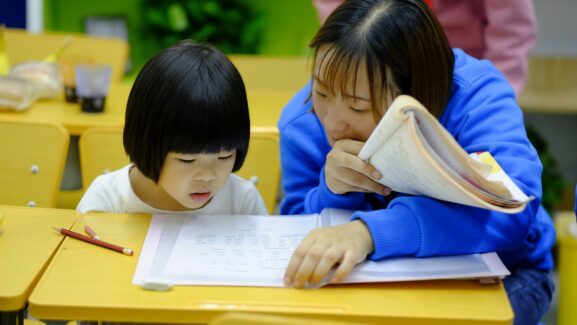Chinese meridians and acupoints are fundamental pillars of traditional Chinese medicine (TCM) and Eastern energy medicine. In acupuncture, acupoints are stimulated to promote the flow of vital energy – or Qi.
But what are the Chinese energy meridians and acupoints, and where are they located?
What is acupuncture?
Acupuncture is a TCM therapy based on the theory that the body contains invisible energy meridians that influence the health of organs and body systems. Mental and physical symptoms are believed to be due to blockages in the energy meridians – caused by stress, poor lifestyle, trauma, infections, and toxins.
Along the meridians are various acupoints – also known as acupressure points or acupuncture points. Acupuncturists insert thin needles into superficial layers of the skin to stimulate the acupuncture points, releasing energy blockages and promoting health. It also relaxes muscles, improves circulation, and triggers the parasympathetic nervous system
What are the Chinese meridians in the body?
In TCM, the Chinese energy meridians are a vast network of invisible pathways – or channels – that allow Qi energy to flow freely through your body.
Energy meridians have a few functions:
- They transport Qi energy around the body
- They govern the function and health of organs and body systems
- They have unique emotional and physical properties
- They contain energy points called acupoints – also known as acupuncture points or acupressure points
The body meridians have been extensively mapped in TCM, but there are 12 major Chinese energy meridians that correspond with specific organ systems. They run along either side of the body, mirroring each other.
| Energy Meridian in Body | Governing Properties | Location |
| The Heart Meridian |
Governs the circulation of blood throughout the body, making it vital for the health of all organs and systems.
| Starts in the armpit and flows down the inner arm, ending at the pinkie finger. |
| The Small Intestine Meridian | Regulates the endocrine system and plays a role in digestion. It has a close connection with the heart meridian. | Starts at the tip of the pinkie finger and runs along the outer side of the arm and shoulder. It flows up the neck and cheek towards the side of the nose, where it juts out and ends at the ear. |
| The Lung Meridian | Governs the respiratory system, the skin, perspiration, and energy circulation. | Starts at the front of the shoulder, near the armpit, and runs down the arm to the thumbnail. |
| The Large Intestine Meridian | This meridian governs the removal of waste and toxins from the body. | Starts on the nail of the index finger and travels up the side of the arm and across the top of the shoulder and collarbone. It continues up the throat and stops below the nose. |
| The Stomach Meridian | Plays a role in regulating digestion and extracting energy from food. | Starts under the eye, below the pupil, and runs down the cheek and jaw before it splits. It branches off with one side travelling up to the scalp and the other running down the neck, chest, abdomen, thigh, leg, and foot to the tip of the second toe. |
| The Spleen Meridian | Governs the health of the blood. | Begins at the tip of the big toe and runs up the inside of the leg and thigh. It crosses to the groin and travels up the abdomen and ribs towards the front of the shoulder, where it ends at the armpit. |
| The Kidney Meridian | This meridian is involved in producing blood and bone marrow and governing the adrenal glands and reproductive system in men and women. | Starts in the arch of the foot and runs along the side of the foot and around the ankle. It runs up the inner leg, straight up the abdomen and chest and ends on the collarbone. |
| The Bladder Meridian | Governs the urinary system and autonomic nervous system, balancing the sympathetic and parasympathetic nervous systems. | Starts from the inner corner of the eye and travels up the forehead and over the back of the skull. It travels down the spine and back of the leg, ending at the little toe. |
| The Liver Meridian | Governs the female reproductive system, detoxification, energy circulation, and ligament and tendon flexibility. | Starts at the inside of the big toe, running along the instep of the foot and up the inner leg to the groin. It crosses the abdomen and ends below the nipple. |
| The Gallbladder Meridian | Involved in fat digestion, lymph flow, and muscular health. | Starts at the outer corner of the eye and travels above the ear and down the neck and side of the body. It runs down to the foot and ends at the 4th toe. |
| The Pericardium Meridian | Also known as the Heart Constrictor — it governs the flow of Qi around the heart and emotional balance. | Starts at the side of the nipple, branching off towards the shoulder and running down the arm to the tip of the middle finger. |
| The Triple-Warmer Meridian | Supports healthy metabolism and promotes elimination. | The triple-warmer begins at the tip of the ring finger and runs along the back of the arm to the shoulder. It travels up the neck, around the ear, and across the forehead to the eyebrow. |
The energy meridian theory is over 2,500 years old. However, science doesn’t accept energy meridians in the body as fact.
What are acupoints, and how do they work?
Acupoints are pressure points located along the energy meridians in the body. Stimulating acupoints mobilises Qi energy, removes energetic blockages, and promotes mental, emotional, and physical health.
Western medicine doesn’t accept that Chinese meridians and acupoints exist, but researchers concede that applying pressure to these points may stimulate sensory nerves1, signalling the brain to release pain-relieving endorphins.
How to locate acupoints
There are thousands of acupoints in the body. Chinese medicine practitioners and acupuncturists spend years studying the exact locations of the meridians and acupoints on the body. They also use detailed meridian maps and acupoint charts to guide treatment.
Here are examples of common acupoints:
LI4 (Large intestine 4) may reduce headaches. It’s found on the back of the hand at the base of the thumb and index finger.
P6 (Pericardium 6) reduces nausea and is on the inside of the wrist at the base of the palm.
ST6 (Stomach 6) helps jaw pain and toothache. Clench your jaw and feel for the muscles that tighten between the side of your mouth and your earlobe.
ST36 (Stomach 36) is known to increase energy and well-being. It’s found on the front of the lower leg, about four fingers below the knee.
Feel for a slight dip in the surface of the skin and a tender point. Apply light pressure with your fingers for a few minutes using a circular motion.
Final thoughts
Chinese energy meridians and acupoints are fundamental concepts of TCM that have been used for thousands of years to improve mental and physical health.
While there is no scientific proof to support the existence of meridians and acupoints, some studies show acupuncture and acupressure treatments help chronic pain2, headaches3, nausea4, menstrual cramps4, and insomnia4.
Resources
- Longhurst JC. (2010). Defining meridians: a modern basis of understanding. J Acupunct Meridian Stud. Available at: https://www.sciencedirect.com/science/article/pii/S2005290110600143
- Vickers AJ (2012). Acupuncture for chronic pain: individual patient data meta-analysis. Arch Intern Med. Available at: https://pubmed.ncbi.nlm.nih.gov/22965186
- Chen & Wang. (2014). The effectiveness of acupressure on relieving pain: a systematic review. Pain Manag Nurs. Available at: https://pubmed.ncbi.nlm.nih.gov/23415783/
- Lee & Frazier. (2011). The efficacy of acupressure for symptom management: a systematic review. J Pain Symptom Manage. Available at: https://www.ncbi.nlm.nih.gov/pmc/articles/PMC3154967/
DISCLAIMER: The Site cannot and does not contain medical / health advice. The medical / health information is provided for general informational and educational purposes only and is not a substitute for professional advice. Accordingly, before seeking any form of medical advice, diagnoses or treatment based upon such information, we encourage you to consult with your GP or other qualified health practitioner. You must never disregard professional medical advice or delay in seeking it because of something mentioned on this Site. The use or reliance of any information contained on the Site is solely at your own risk.





